Aldie Dental Care Blog
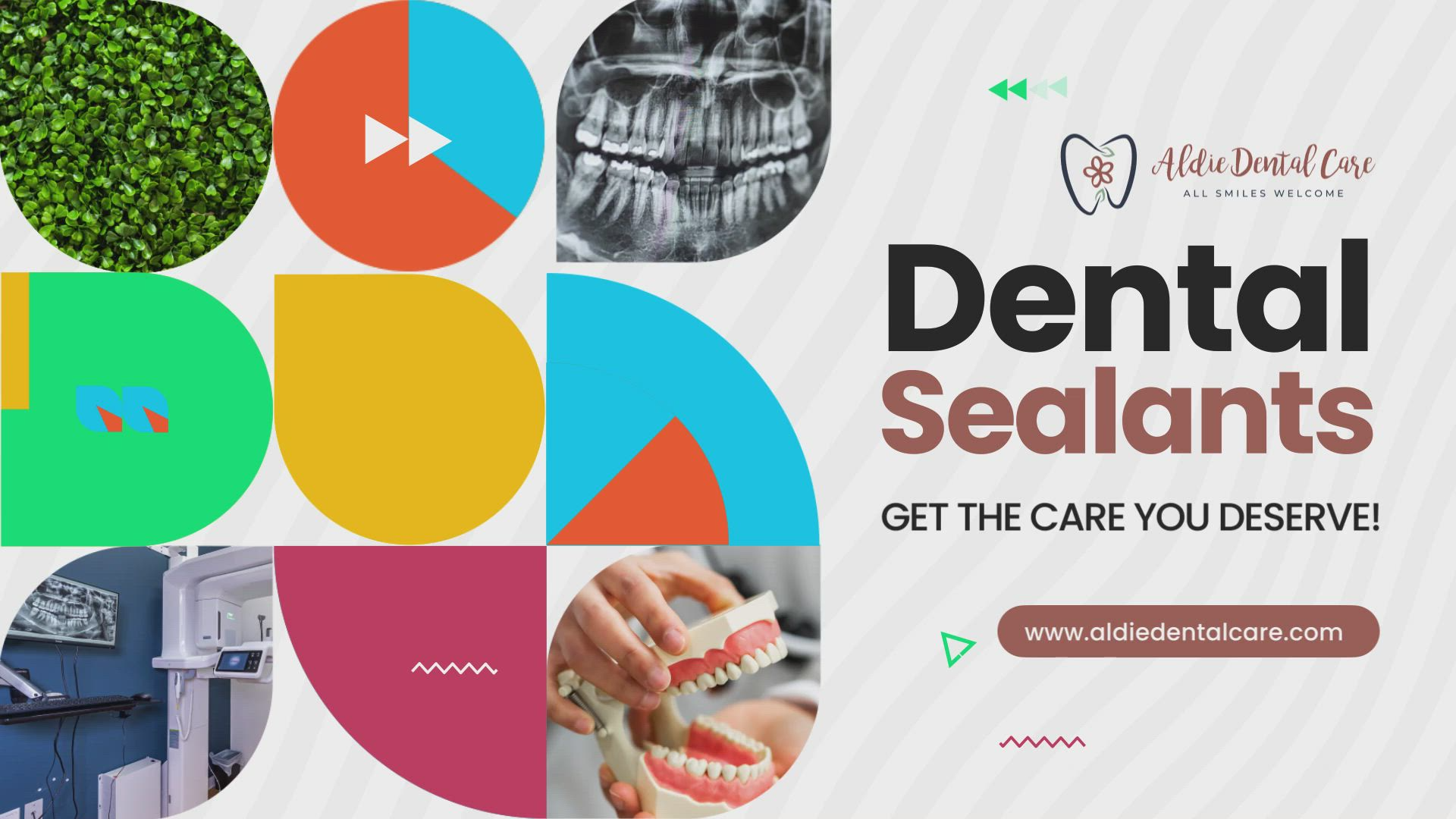
January 1, 2023
Dental sealants are thin, protective barriers that keep teeth from developing cavities in decay-prone areas. They are made of an almost plastic-like resin that coats the deep, pitted chewing surfaces of back teeth. The application takes only minutes and as a result, less bacteria can accumulate in these narrow spaces because they’re easier to clean with a toothbrush. Sealants are semi-permanent and more of a temporary measure. The ultimate goal is to seal a child's teeth so that they approach adulthood with a cavity-free smile. Excellent oral hygiene (including daily flossing) and routine dental checkups are still essential. Benefits of Dental Sealants Cleaning the surfaces of the molars can be challenging, if not impossible at times. Tight spots can be so narrow that they demineralize even if you brush them each day. Sealants can aid in the prevention of cavities, especially if they’re placed immediately after those teeth erupt. With dental sealants: ● Brushing is more effective ● Bacteria and acids are prevented from accumulating in the deep, narrow grooves of teeth ● It reduces the chances of getting cavities later ● The application is simple and fast ● Protection begins right away The Dental Sealant Application Usually, we place dental sealants during your child’s checkup, after their cleaning. They are painless, as no numbing is required. We recommend applying the sealant on first and second molars, which erupt around the ages of 6 and 12, respectively. The hygienist will clean and condition the tooth, dry it off, apply the sealant, then use a bright light to cure the sealant in place. It takes just 2-3 minutes per tooth. Schedule Your Appointment Sealants are a fantastic way to lower your child's risk of cavities while also assisting them in maintaining a healthy smile. To book a sealant appointment or find out if your child qualifies for dental sealants, contact Aldie Dental Care today.
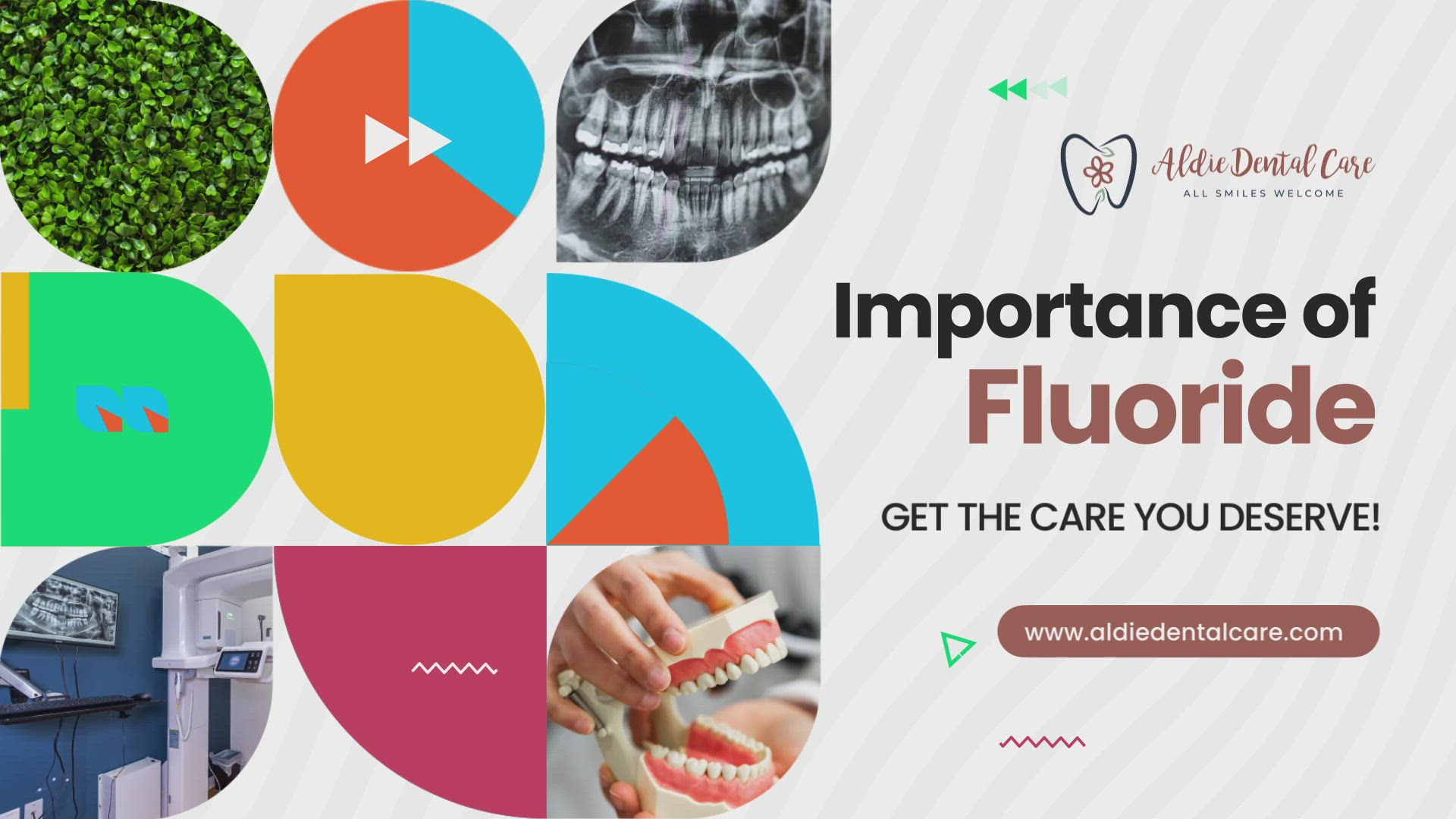
December 1, 2022
When was the last time you received a fluoride treatment at the dentist? If it's been a while, you’re probably due for a checkup at our Aldie dental office. There are numerous advantages to this twice-yearly treatment and how it affects your smile more than you might realize. Fluoride Remineralizes Enamel The primary reason that dentists utilize fluoride in their practice is to strengthen weakened or decalcified tooth enamel. If your teeth have white spots, are in the initial stages of decaying, or you have a diet that puts you at risk for cavities (think sodas or sports drinks), fluoride treatments can help remineralize your tooth structures before a physical cavity forms inside of them. Fluoride Decreases Tooth Sensitivity Professional fluoride treatments aren't just for preventing cavities. They can also help with tooth sensitivity. If you have sensitive teeth or receding gums, a fluoride treatment at our Aldie dentist's office can alleviate symptoms for up to three months at a time. If you can't wait another three months for your next dental check-up, stop by our office for a quick re-application. Proper Amounts of Fluoride are Important Fluoride-containing rinses and toothpaste are safe to use on a daily basis. But "daily use" isn't always enough. A prescription-strength fluoride solution is essential for patients who have persistent dental problems, are undergoing orthodontic therapy, or conditions like gum recession that put their smile at an added risk. Is Fluoride Safe? Fluoride, like any other naturally occurring mineral, is beneficial when used at appropriate dosages. Excessive usage of fluoride or any other mineral/vitamin supplement can have negative effects like gastrointestinal problems or dental abnormalities in developing teeth. But at the right dose, it improves your oral wellness. Schedule a Fluoride Treatment Why would you risk your oral health when this simple procedure can help save your smile's future? After your next tooth cleaning, be sure to request a fluoride treatment!
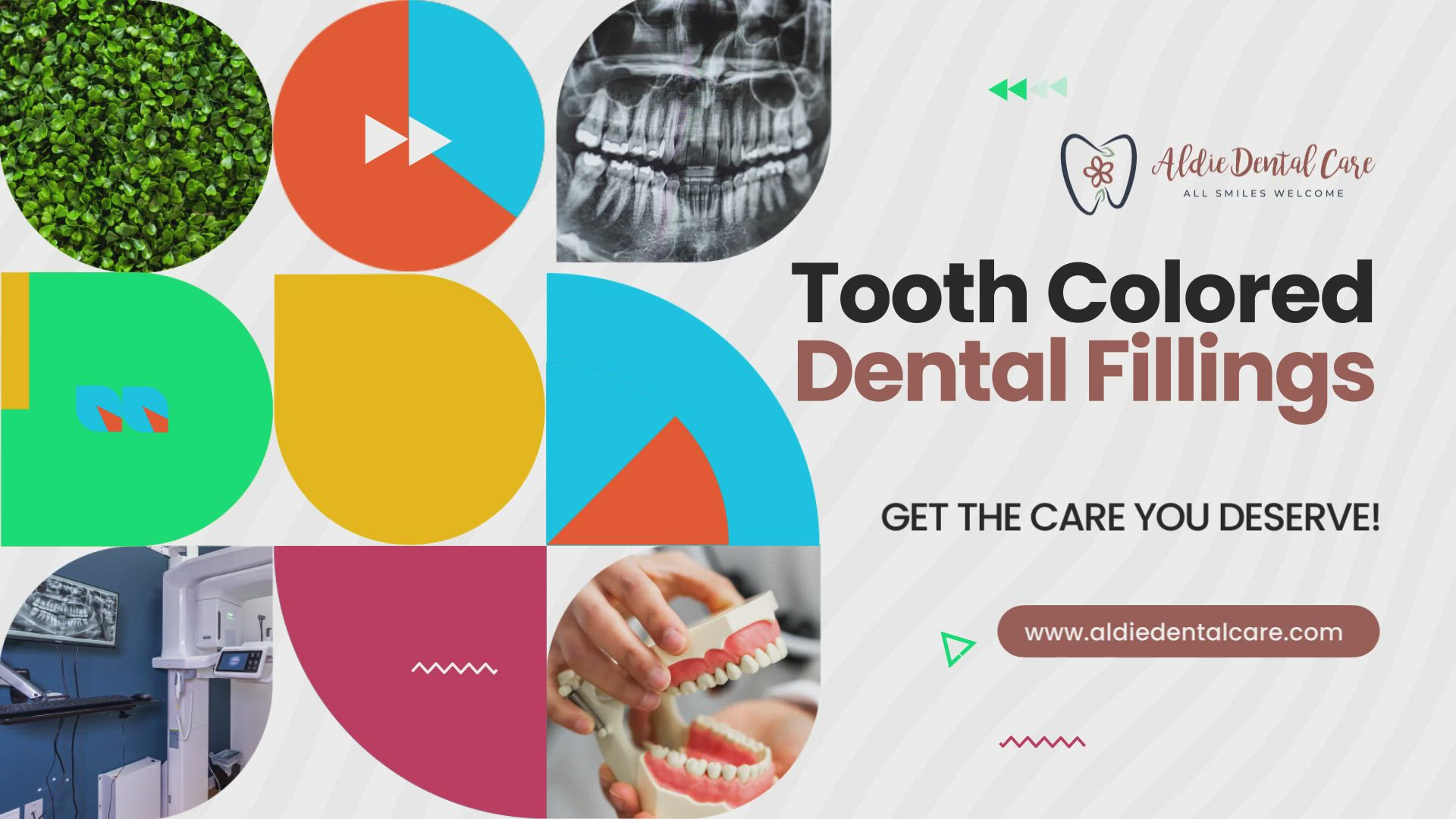
November 1, 2022
White dental fillings are a great alternative to traditional silver (amalgam) fillings. Instead of a combination of metals, they’re made from tiny glass or polymer particles that bond better with your enamel. Composite fillings offer several advantages of amalgam restorations if you have a cavity or older filling that needs to be changed out. A Flawless Appearance It's obvious to see how a white filling will look better than a silver one, especially in the front of your smile. Silver fillings can also cause tooth discoloration over time. Since composite materials are matched to your enamel, they blend right in with your adjacent tooth structures. White fillings come in a variety of colors, ensuring natural looking results that other people won’t notice. Less Invasive to Teeth Aside from their appearance, white fillings have the advantage of being the least invasive restoration for your teeth. Because of the way they bind to enamel, they preserve as much healthy tooth structure as possible. We only have to remove the decayed or damaged area of the tooth, rather than any adjacent structures. Whereas silver fillings are wedged into place, requiring additional tooth removal to begin with. Strengthens Teeth Some forms of white fillings also contain fluoride that is slowly released over time. As a result, it protects and strengthens the enamel surrounding your restoration. Fluoride lowers demineralization rates, reducing your chances of recurring decay. This characteristic makes them useful for our Aldie dental patients who are at a high cavity risk. Schedule Your Appointment Today Do you think you have a cavity? Aldie Dental Care provides a variety of restorative treatments to choose from. Whether you need to replace old metal fillings or you have a new cavity that needs to be treated, we can help. Contact us today to reserve your next appointment.

October 1, 2022
Cold sores are both painful and unattractive. They almost always flare up on your lips or at the corners of your mouth. If you have what seems to be a big ulcer or cluster of blisters popping up, it’s typically a cold sore. By understanding the warning signs there are steps you can take to limit cold sore flareups and treat them before they’re visible, thanks to FDA-approved laser therapy. Cold sores (also known as "fever blisters") are caused by a virus and take much longer to heal than typical ulcers. As a result, treatment will differ significantly from that of a conventional aphthous ulcer. Symptoms of Cold Sores Cold sore symptoms typically involve a cluster of tiny ulcers or blisters appearing in one area of your mouth or lips. Before the blisters appear, you may experience tingling or burning sensations. After a few days, the fever blister will swell and become itchy. It may even begin to resemble a giant, round, red region that has caved in due to the raised margin around it. The good news is that the majority of cold sores do not leave scars. The unfortunate thing is that they can appear unsightly for up to two weeks at a time. Laser Treatment for Cold Sores Since cold sores take so long to heal, it’s important to intercept them as soon as you notice a stinging, burning, or other early symptoms of fever blisters. As soon as you notice a cold sore forming, contact our Aldie dentists. We offer safe laser cold sore therapy that stops fever blisters in their tracks and cuts down on the healing time by as much as 50%. Concerned About Cold Sores? If you’re worried about your cold sores, our Aldie dentists can help. Call today to schedule your laser cold sore treatment.
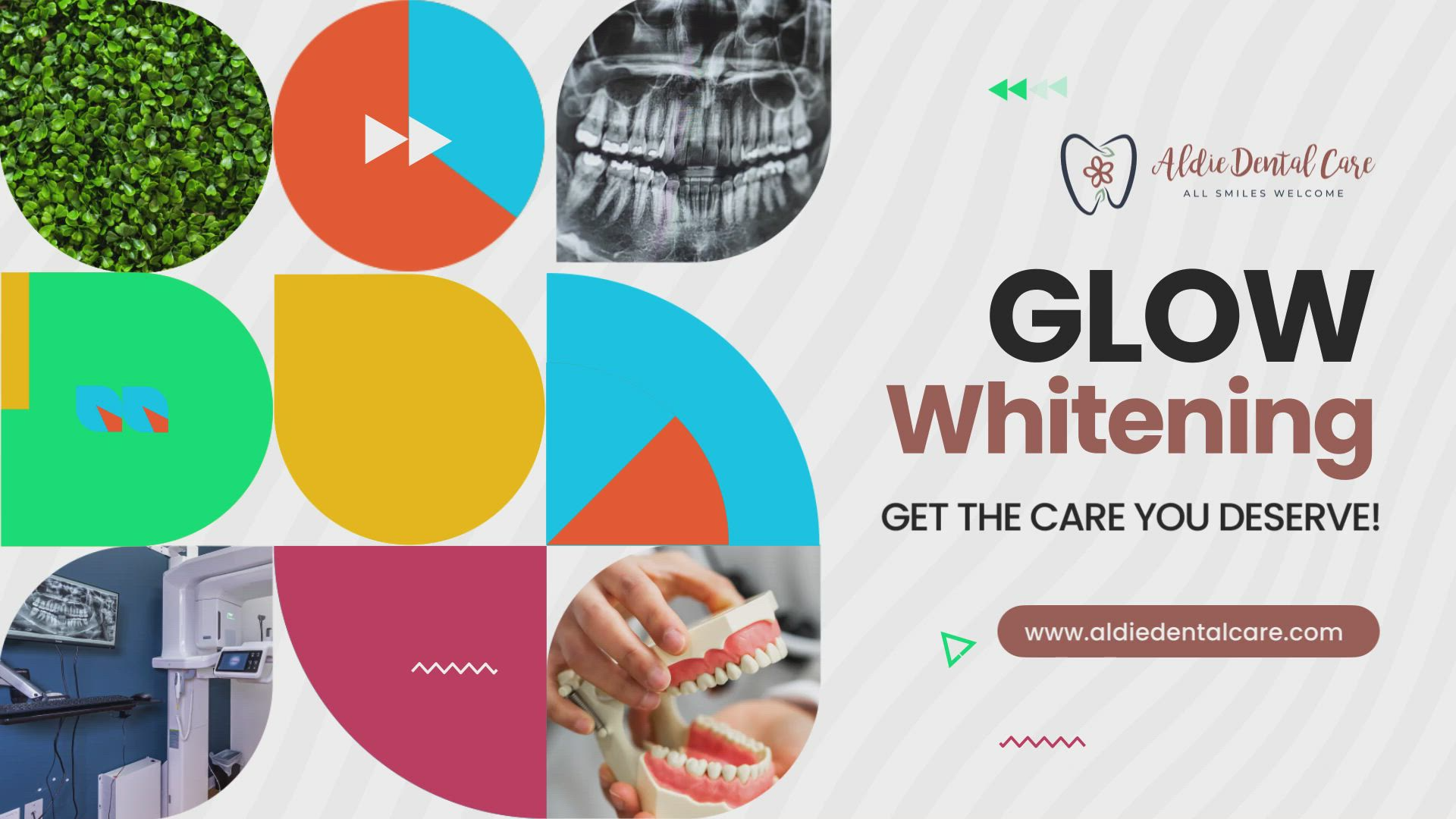
September 1, 2022
Brighter, whiter teeth can help you look and feel your best. At Aldie Dental Care, our professional teeth whitening systems make your smile several shades brighter, for the perfect stand-alone smile makeover or to prepare for additional cosmetic procedures. If you’ve ever considered teeth whitening, there are safe and effective ways to brighten your smile at home. We recommend the Glow Whitening system. Glow Whitening delivers professional results that are convenient and cost-effective. Benefits of Glow Whitening Anyone who is embarrassed by the appearance of their smile may want to consider Glow Whitening. Teeth bleaching helps alleviate food stains, tobacco stains, age-related darkening, and discoloration on tooth enamel. Plus, it offers fast and dramatic results. Teeth whitening is generally considered a safe technique for most adults. The most important thing is to ensure that your teeth and gums are healthy before using teeth bleaching products. When decayed or cracked teeth are whitened, it can cause unnecessary sensitivity or damage. The same can be said if you have active gum disease. How Glow Whitening Works Our at-home Glow Whitening program is one of our most preferred whitening treatments. We begin by taking impressions of your teeth to fit you with customized trays. Each tray holds a small amount of whitening gel against your teeth, naturally lifting deep stains from your tooth enamel. Our home kits are designed to be worn for just an hour or two a day, or they can be worn all night. Wear the trays every day for 10-14 days to see full results. Simply wearing your trays a few days in a row, two to three times a year, will keep your smile white for the long term. For optimal results, we recommend touchups after your six-month dental cleanings. Ready to Get Whiter Teeth at Home? Aldie Dental Care is the place to go for Glow Whitening's at-home bleaching kit. Give us a call today to get started!
August 1, 2022
When you smile, do you see different colors or shades of white on your front teeth? Perhaps you have a few lighter white areas that stand out from the others? The existence of white spots on your teeth does not mean that particular portions of your smile are naturally brighter. White spots are caused by factors such as early stages of tooth decay (cavities) or maybe too much fluoride during tooth development. Although these two elements are unconnected, they both affect the functional nature of your tooth enamel and, as a result, how it appears on the outside. White spots on teeth, unfortunately, cannot always be eradicated with a whitening procedure. In fact, dental whitening might make these lesions more visible. How ICON Infiltration Helps To better manage the fragile, porous, or decalcified portions of tooth surfaces that generate white spots, the ICON system uses a "resin infiltration" method. In a word, ICON targets the "micropores" right beneath your enamel's surface. Because the ICON Material is transparent in nature, you will get a natural-looking hue even if you later decide to whiten your teeth later on. When ICON is infused into the weaker parts of your enamel, it not only removes the white discoloration, but it also strengthens the tooth, making it more resistant to sensitivity and decay. ICON Resin Infiltration Treatment An ICON DMG white spot treatment only takes a few minutes per area. It takes roughly three minutes to complete the infiltration technique. Our Aldie dentist cures the material into place once it has been fully absorbed by your tooth enamel with a tiny, focused light. As a result, the composite infiltration materials become a permanent part of the tooth architecture at that location. When our Aldie dentists perform a white spot treatment on, say, two front teeth, the complete procedure should take no more than 20 minutes. Discover whether ICON resin infiltration can provide you with the healthier, more attractive smile you want. Contact Aldie Dental Care today!
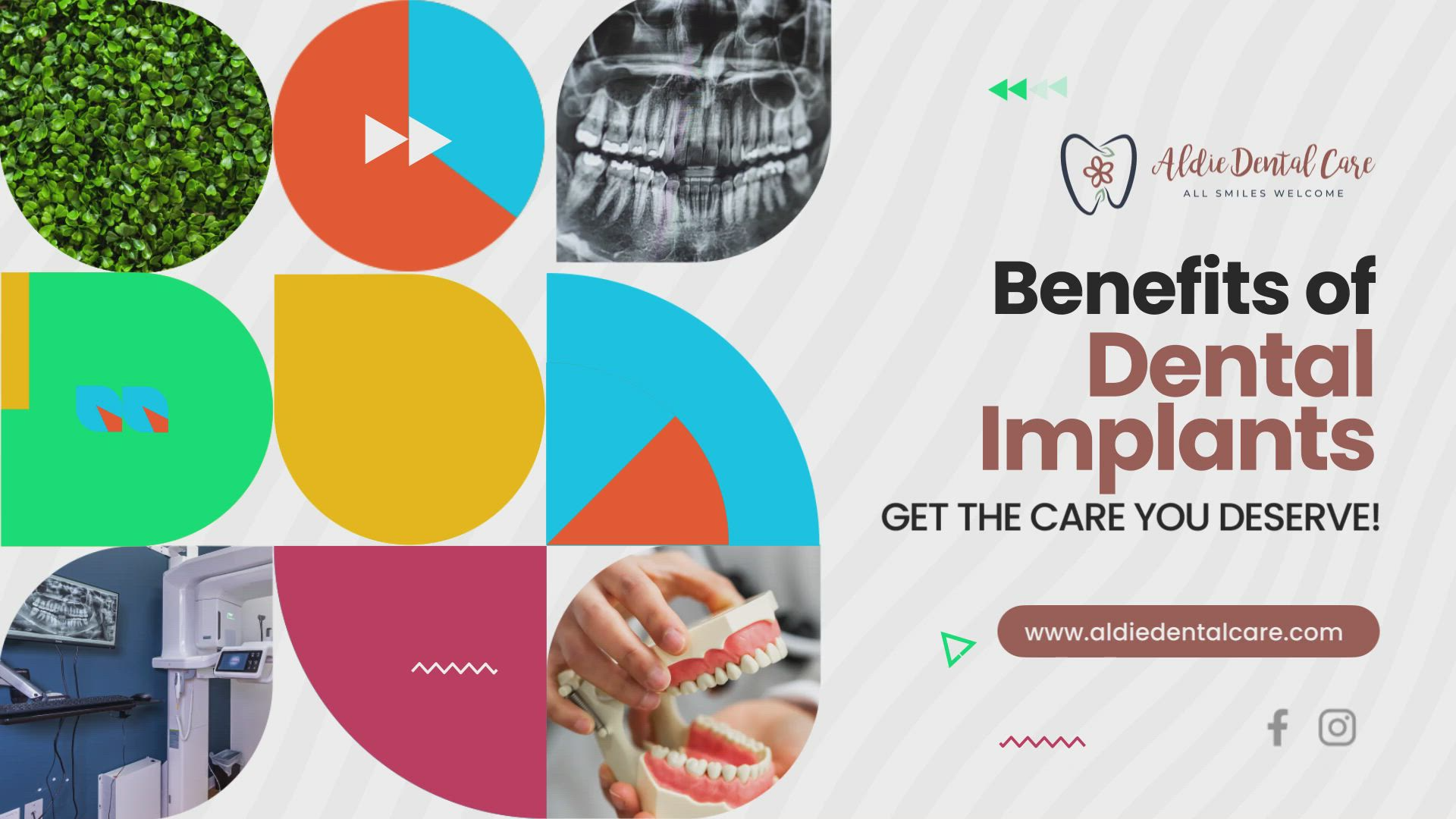
July 1, 2022
Aldie dental implants are a cutting-edge treatment option for adults who have missing teeth. Implants, unlike other conventional tooth replacements, are meant to resemble a tooth root and are inserted directly into the bone next to your remaining teeth. Your implant will fuse with the bone and become a permanent part of your smile. Failure of a dental implant is extremely rare. When placed by a skilled implant dentist, they have the highest success rate of any dental treatment. And, best of all, they provide long-term results. When to Choose Dental Implants Implants can be used for a number of purposes depending on the individual. Single implants are often implanted in locations where only one tooth is missing and are topped off with a crown. Or, a pair of dental implants can be placed on either side of a wider space, anchoring a multi-tooth dental bridge for restoring 3-4 teeth at a time. And, best of all, a full arch of teeth can be restored with as few as four implants. Advantages of Dental Implants Implants vary from other typical tooth replacements in that they are not held in place by neighboring teeth. Instead, implants function as independent, biocompatible, artificial tooth roots. Because of how secure they are once integrated into the bone surrounding them, they can be utilized to replace any number of teeth. A fully-integrated implant is extremely unlikely to fail or require replacement. Once integrated, it also slows the premature aging we frequently see in people who have suffered from tooth loss. Implants are simple to care for and have a high success rate. The majority will last the remainder of your life. Even more crucially, depending on how many teeth you need to replace, they can be utilized alone or in conjunction with other implants. You won’t need to wear a removable denture or partial. Call to Schedule Your Visit Our Aldie dentists will help you weigh all the options concerning your smile’s health and function. That way you’ll feel confident making an informed decision about dental implants. Call today to schedule.

June 1, 2022
People develop receding gums for a variety of reasons. Periodontitis (gum disease), bruxism (clenching and grinding), aggressive brushing, or using a stiff-bristled toothbrush are all common examples. Rapid tooth movement during orthodontic therapy might also cause gum recession in some circumstances. People who smoke or use tobacco products have a higher incidence of receding gums. Does Gum Recession Get Worse? Areas of gum recession do not and cannot mend themselves. While proper home care might help prevent additional recession, poor dental hygiene will only exacerbate tissue loss. Over time, cases of recession cause obvious black triangles, exposed tooth roots, or gaps between your teeth. These spots are not only unsightly, but they also shelter food and tartar buildup. Exposed root surfaces tend to be extremely sensitive. And they significantly increase your chances of developing root-surface cavities because there is no enamel covering them. It’s important to treat gum recession before more serious side-effects develop. Treating Gum Recession A gum graft (augmentation) or gum transplant is one of the most direct approaches to offset tissue loss caused by gum disease or traumatic injury. Gum grafts physically re-cover the exposed tooth roots by using tissue from another section of your mouth or an allograft material. The repositioned gingiva attaches to the tissues next to it, replacing the lost gum over the tooth. The new layer of attachment tissue will serve both a functional as well as aesthetic purpose. Traditional grafting is fairly prevalent when gum recession occurs as a result of physical trauma or previous cases of severe gum disease. We will wait until your tissues have healed and stabilized after scaling and root planing to perform the graft. It’s important that your tissues be healthy, with no active redness, inflammation, or bleeding. Schedule Your Evaluation To schedule a gum grafting consultation, contact our Aldie dental team today.
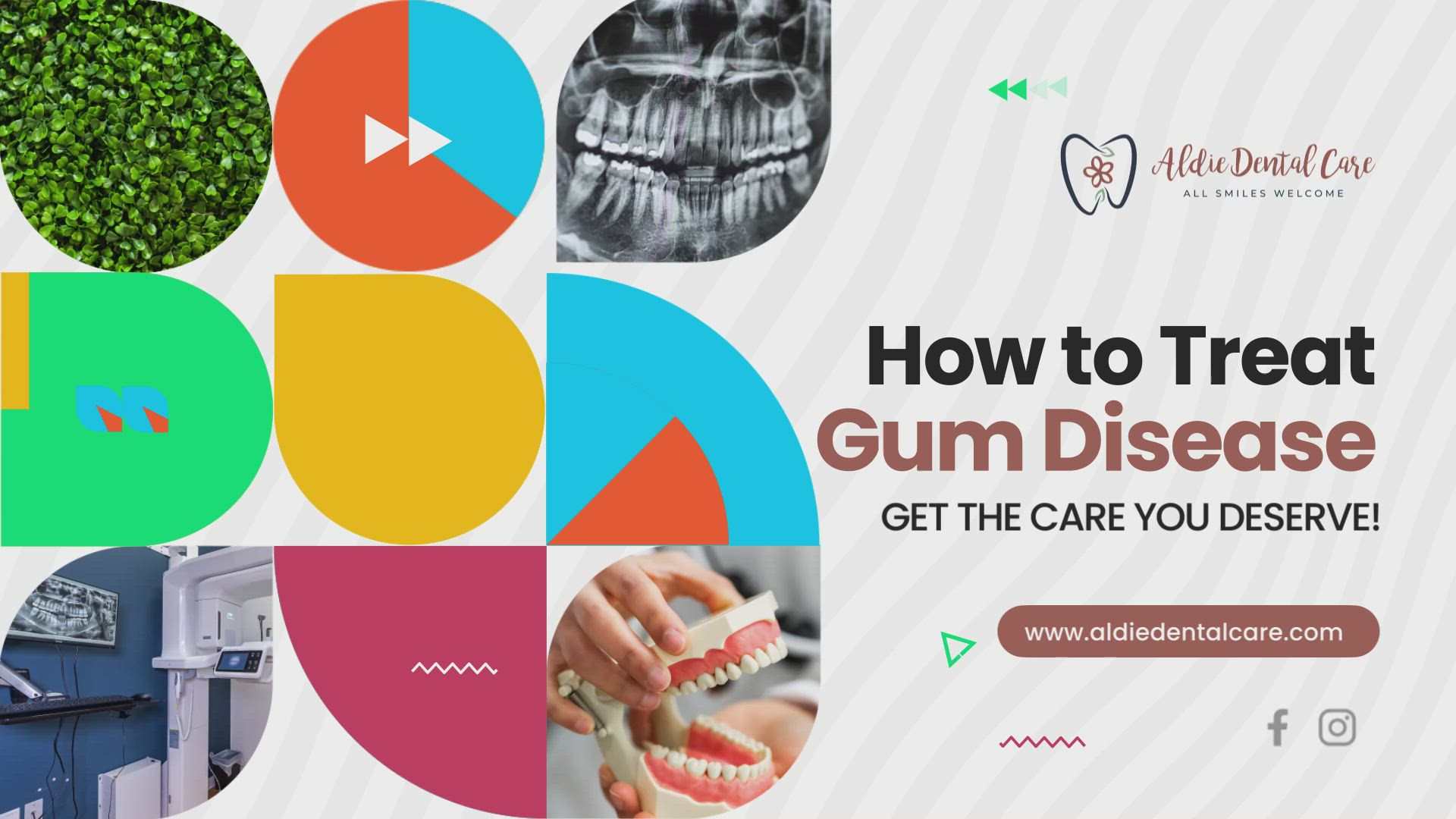
May 27, 2022
How to treat gum disease or periodontal disease. If the gum disease is detected at a very early stage we can treat it by Gingivitis may seem like a common problem without any long-term consequences. But if not treated promptly, it can quickly progress into gum disease, also known as periodontal disease. Gum disease causes more tooth loss than tooth decay, but it isn't the only reason to seek treatment. People who have untreated periodontal disease can also experience major consequences to their overall health. In truth, active periodontitis often makes it difficult to manage a variety of health issues. How Gum Disease is Diagnosed The first step is to schedule an appointment with our Aldie dentist. A clinical exam, periodontal screening, and digital x-rays are used to diagnose the extent of your gum disease. The screening involves measuring the gum tissue attachment levels at six sites around each tooth as well as evaluating bone levels between teeth. Treatment for Gum Disease If you have periodontal disease, brushing and flossing aren’t enough to help. Instead, a thorough deep cleaning is necessary. The tissues around the teeth are usually numbed for this treatment. All calcified tartar and loose plaque biofilm are removed from under the gums around each tooth. In regions where the infection is more severe, a local antibiotic may also be administered. In some circumstances, a prescription may be recommended to reduce the number of active bacteria immediately following therapy. Gum grafting, bone grafts, or flap surgery may be required to treat more severe gum disease. These procedures can help to keep the tooth stable so that it does not become mobile or fall out. They also make cleaning around your teeth easier, reducing the chances of reinfection. As your gum tissues heal, your immune system will be better able to manage any co-existing conditions, like diabetes, heart disease, or respiratory illnesses. Schedule a Periodontal Consultation When was your most recent dental exam? Don't let gum disease ruin your smile; schedule a checkup and periodontal screening at Aldie Dental Care now.
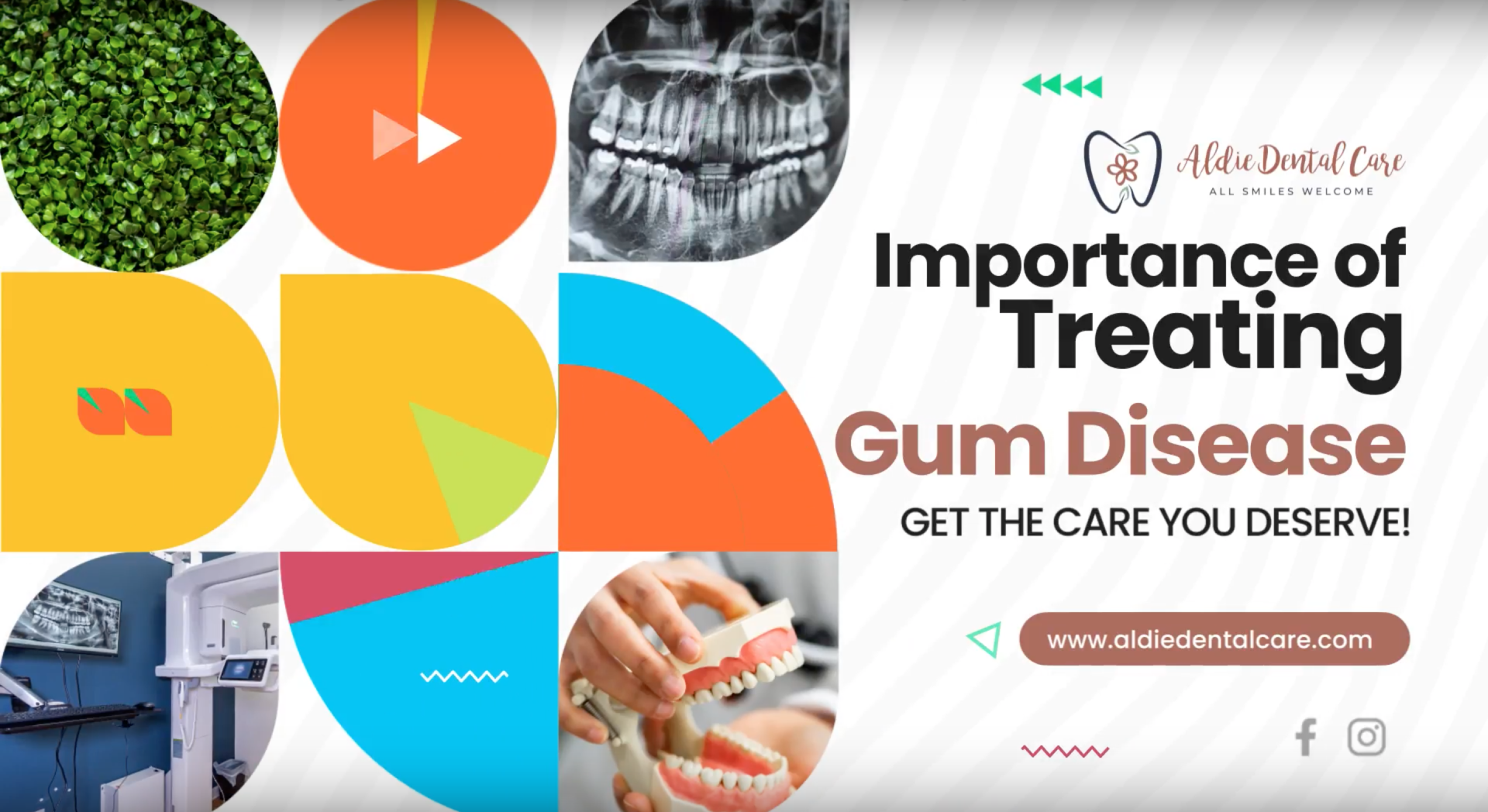
April 22, 2022
Periodontal disease, sometimes known as "gum disease," or "periodontitis," is a condition that causes soft tissue and bone deterioration around the base of your teeth. Unfortunately, it can often go undiagnosed until it's too late, putting your smile's integrity at risk. Early detection and therapeutic gum treatment with our Aldie dentists can be beneficial! Gum Disease Symptoms Bleeding gums are always an indication that something is amiss. Healthy gums are usually coral in color with no swelling, soreness, or bleeding. People with darker skin tones may also have speckled or brown gingiva. Red gums, on the other hand, are not normal. Receding gumlines, bad breath, tartar buildup, and tooth mobility are obvious signs to look for. Gum swelling and bleeding are the result of our body attempting to fight off some sort of infection. Although periodontal disease appears to impact only your teeth, it can have major effects on your entire body and immune system. Why Treat Gum Disease? Untreated gum disease will put you at risk for major health complications. Gum disease is associated with a variety of medical disorders, including diabetes, stroke, heart attack, preeclampsia, and infertility. Periodontal disease treatment is statistically proven to help boost your immune system and recovery from such conditions. If you have bleeding gums, don’t ignore the warning signs. As the primary point of entry into your body, infected gums can allow oral biofilm to migrate directly into your bloodstream. They can then spread throughout your body, becoming trapped in arteries, the heart, around the brain, and absorbed into your lungs. It can also be dangerous to your unborn child. Gum Disease Treatment in Aldie Don't put off treating gum disease until it's too late! Contact Aldie Dental Care if you have red, swollen or bleeding gums to schedule periodontal examination with our experienced team.
ESTÁS LISTO PARA AMAR TU SONRISA?
We are proud to call Aldie home, and happily provide the best quality dental work that Aldie has to offer. At Aldie Dental Care, we are happy to help with any dental questions you might have.
Quick Links
Contact Us
24560 Southpoint Dr Suite 210, Aldie, Virginia 20105
Business Hours
- Mon - Fri
- -
- Sat - Sun
- Closed
© 2025
All Rights Reserved | Dentist Websites by Energize Group
